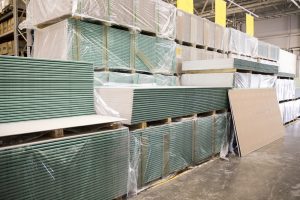
One of the most challenging aspects of managing lien rights is that the lien laws themselves are different from state-to-state. And not only that, but the lien laws also vary based on the type of company (i.e., subcontractor or material supplier, etc) that wants to use the lien rights process to secure their payments. When it comes to material suppliers, one constant among the laws is that a mechanics lien right only arises if your materials are incorporated into the property. Please read on for a brief discussion on the importance of incorporation as it relates to lien rights for material suppliers.
Why Material Suppliers Need To Worry About “Incorporation” of Materials
Incorporation is an important concept for material suppliers. The right to file the mechanic lien only arises when the materials are physically incorporated into the project’s property. That means that if the materials are “ordered” but are still in a warehouse somewhere, then there’s no lien rights. Even if the materials have been “supplied” to the job site but are still on a truck, or are at the job site but stacked on a slab, there is no right to file a mechanics lien.
For example, imagine a residential construction project that is half-built. There are several pallets worth of bricks around the site that have yet to be incorporated into the structures that are being built. However, a considerable amount of bricks have already been incorporated into the houses under construction. The material supplier that supplied the bricks in this scenario would only have the right to file a mechanics lien on the bricks that have been incorporated or used in the building. There is usually no mechanic lien right whatsoever on this bricks still sitting on the slab.
Furthermore, if the job stalled at this point, the parties went bankrupt, construction was terminated, or something went awry with the installation bricks, the material supplier would never get a mechanic lien right for the bricks that are have not been used. The material supplier may have delivered the pallets of bricks to the jobsite and have absolutely no idea as to the percentage of the bricks that have been incorporated into the structure, but this line of questioning is futile in the end – no incorporation means no lien rights.
How To Prove Your Materials Were Incorporated Into The Project’s Property
The issue here boils down to how a material supplier can prove (in court) that its materials were actually used in the property. The vast majority of states give material suppliers a pass here, and create a presumption in their favor so long as the material supplier can prove the building materials were delivered to the job site.
In plain English, the presumption works like this: If the building material supplier can prove that its materials were delivered to the job site, the courts will presume that they were incorporated. Once the material supplier proves the materials were delivered to the job site, then the burden falls onto the party challenging the lien to prove that the materials were not incorporated into the property.
So, what does this mean to material suppliers? Well for one thing, if you want to secure your lien right, then you better make sure that you can prove that your materials were delivered to the jobsite. Be sure to always obtain some type of signed proof of delivery whenever you make a delivery to a jobsite. If an argument is later made that you’re without lien rights because the materials weren’t used, you’ll want to have this signed proof of delivery to whip out to claim your presumption.
One last, important point: there are special considerations for suppliers of specially fabricated materials. Please follow the link to learn about how these custom-made materials are handled when it comes to lien rights.



